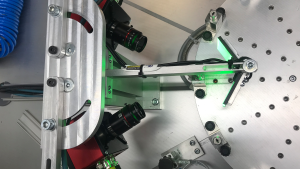86400 pictures every day?
What actually happens to the images in an image processing project?
Obviously, images are essential for Machine Vision. An image is captured and various image processing parameters are used to check whether the image meets the previously defined requirements. A signal is then passed on, from which it can be deduced whether the image is OK (IO) or not (NOK). So no image = no Machine Vision. Or in another use case, an image is taken and the code on the image is read and stored. Again, no image = no image Machine Vision.
But imagine you have a production where you check a component every second. You are literally overwhelmed with images. 86400 images per day. Tons of data. Will you be able to save them all?
With real-time image processing systems, such as those used in self-driving cars, the images may not need to be stored as they are processed immediately. But in many cases it makes sense to save the images.
For example:
🔸 If you are testing components that you want to sell to customers. You always have picture proof that the component was in order.
🔸 To analyze the images if required. You can understand why components were sorted out. Even if you want to compare different batches with each other, you can determine whether the quality or progress has changed over time.
🔸 You may also want to share the images with other departments.
🔸 And a final obvious example is the use of saved images for training your image processing system. The more data you have for training the model, the better.
As always in life, it all depends.
If you decide to save the images after processing, you have several options. Image processing systems such as the evoVIU Smart Camera allow you to store the images on your server, on a hard disk or in a cloud storage service. Which option is best for you depends on your system and also on factors such as file size and image quality.
Other contributions:

Release Update V5.4.0
The release update V5.4.0 is here! A major dashboard update, minor bug fixes and the integration of persistent variables are included.

Finally: The new VIU2 PoE camera is here!
The VIU2 PoE camera is here! You can find out why PoE is an important feature in this article.

Finally: The new VIU2 PoE camera is here!
The VIU2 PoE camera is here! You can find out why PoE is an important feature in this article.

